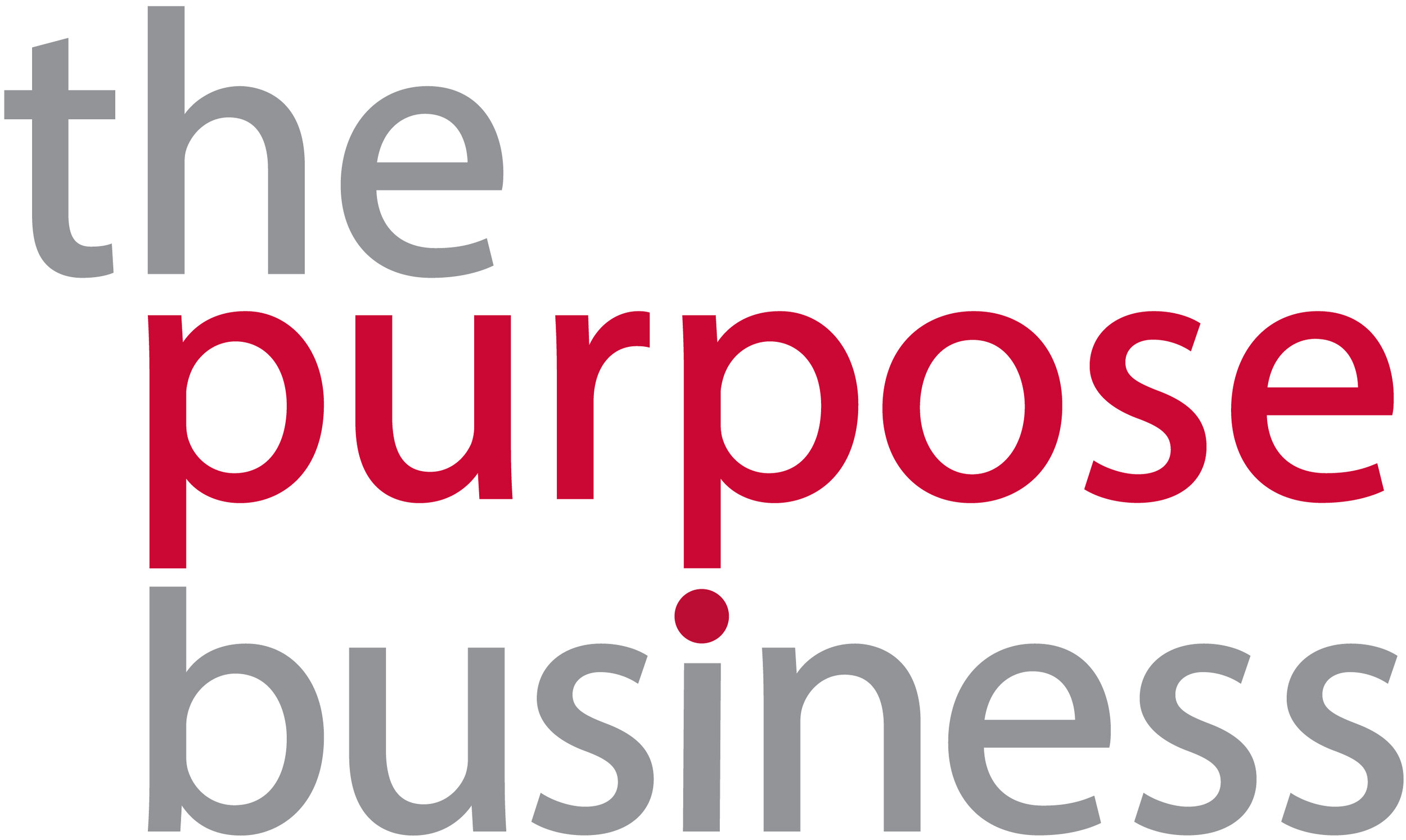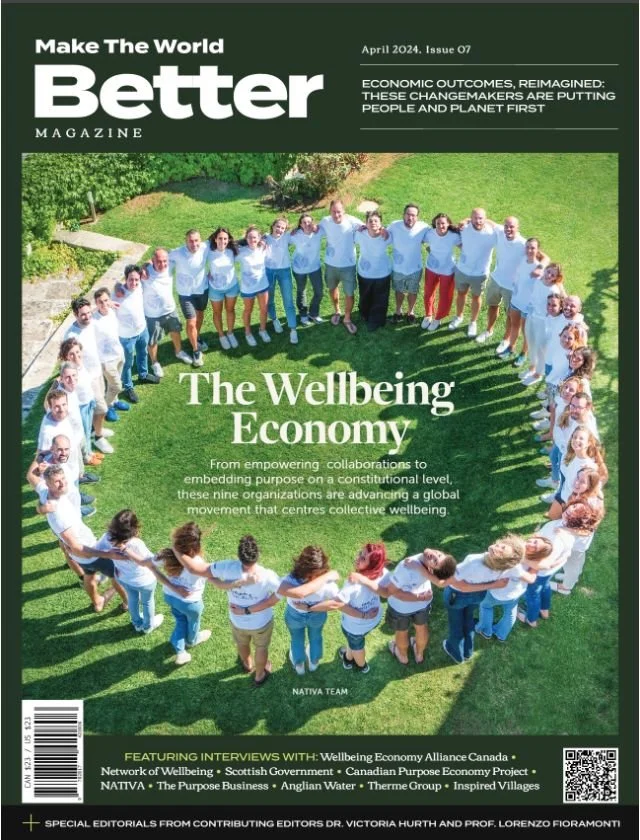Leading with purpose and transforming business in Asia
Diana Chen investigates the drivers of purposeful transformational change for business leaders in Asia.
Any discussion around corporate purpose traditionally starts with a company defining their “why”. This task often lands in the laps of marketing and HR teams to articulate, while senior leaders periodically surface to annotate and give final sign-off. However, with customer, employee and competitive demand for greater transformational change, we now see a paradigm shift from “business as usual” coated with a corporate purpose statement to a systems value proposition, with corporate purpose as the sprouting seed.
The role of business in society is evolving from a focus on shareholder value to an engaged focus on meaningful corporate value creation. As this imperative for business responsibility becomes widely accepted, companies are increasingly leveraging corporate purpose to shape a future that connects business imperatives with the global development agenda.
- Leaders on Purpose, 2019, “Purpose-driven leadership for the 21st century: how corporate purpose is fundamental to reimagining capitalism”
The UN’s Sustainability Development Goals (SDGs, or Global Goals), a universal framework that outlines the challenges facing society today, provides a common language for businesses to activate their purpose around. Achieving the SDGs brings $12 trillion in market opportunity through products and services to address global challenges such as ending poverty, fighting inequality and addressing the urgency of climate change. To deliver impact beyond shareholder value, businesses should seek to embed systematic focus and continuous improvement on the environmental and social value that they bring, resulting in the wellbeing of both company and society at large.
While there are several tracks of thought that help drive purpose within an organisation, the below are currently the most prudent for corporate leaders in Asia to embrace and practice in order to drive purposeful transformational change for business.
Business need to shift from customer centricity to systems centricity
Forward-thinking leaders are not just approaching the SDGs as a framework to reference their business value to customers or shareholders, but rather understanding their organisation as a globally integrated company operating within the interrelated issues of the world. They believe that there does not need to be tension or barriers between delivering value for the world and delivering it for the company. Rather, both are delivered along the same value-driven corporate strategy.
A criticality to solving complex challenges, systems thinking uses a holistic approach to analysis that focuses on how a system’s individual parts interrelate, work overtime and serve purpose within the context of other systems. This aggregates different perspectives to provide rapid feedback for continuous improvement and innovation.
Taking a systems view allows purpose-driven leaders to better identify growth opportunities. The recent report by Leaders on Purpose outlines ways in which businesses are seeking to deliver on systems needs. The results have been positive effects in innovation-related leadership, such as:
Focusing cross-industry collaboration on the needs of society to drive innovation
Enhancing and scaling technology to enable broader availability of solutions
Growing from domestic to global markets to uncover new customer base
Transforming value and supply chain via innovation
Know your impacts, favour improvement, and share what you learn.
- Daniel Goleman, psychologist and author of “Emotional Intelligence” and “Social Intelligence: The New Science of Human Relationships”
The first step towards a systems approach is recognising what processes of your company’s operations are already creating value for society and the planet. A company has to understand the results of its current actions before implementing improvements or sharing with others. The next step is understanding that whatever your decisions are for improvement, there is a broader sphere of influence. Taking a systems approach in evaluating the potential opportunities, problems and risks associated with an existing process or outcome will direct the magnitude of the decision towards responsible growth. And finally, progressing as one planet requires the humility to share your challenges, solutions and learnings with others (especially competitors) while asking for feedback on continuous innovation and growth.
Leaders have a responsibility to foster organisational agility
Our world today operates at an unprecedented pace and level of volatility than ever before. Rapid technological advancements, environmental complexity combined with lowering levels of trust between business and consumer means that companies need to be more agile to change and innovation. Leaders can no longer afford to simply react to when things happen. They must plan ahead with more flexibility, have a higher tolerance for ambiguity and be willing to embrace risk with a lens for opportunity.
To understand how to actually facilitate organisational agility is to identify the types of internal networks your business currently have in place – whether adaptive or hierarchical. Leaders often exercise the adaptive network to engage the creativity of their employees and create psychologically safe spaces for ideas to thrive. Whereas, although a hierarchical network might not prove the fastest way of developing ideas, it acts as an organisational muscle to allow these ideas to implement and scale. Identifying the right balance between these two networks within your organisation will best implement high-impact, purposeful change.
In Asia, we typically see more hierarchical networks that reflect hard-wired directionality, procedures and decision-making with fixed priorities in energy and resources that are best equipped to handle predictable and recurring activities. However, given the market size and opportunities for new development in the region, there is an enormous untapped opportunity to foster innovation and collaborative learning through the adaptive network.
Helping solve the world’s problems makes business sense
Companies are feeling the gravitas of a conscious shift in perspective from micro to macro – from the singular goal of profiting investors to an entirely expansive view of benefiting the planet for all. When taking the macro perspective of all stakeholders, it’s impossible to ignore the force of younger generations that increasingly drive market demand.
In Deloitte’s 2019 Global Millennial Survey, among the 20 challenges facing society that most concerned respondents on a personal level, climate change/protecting the environment/natural disasters were at the top of the list for both Millennials and Gen Z, outperforming the next highest concern of income inequality/distribution of wealth by more than seven points.
In his 2019 Letter to CEOs, Blackrock CEO Larry Fink stressed the importance of recognising this generational revelation to inform long-term investment decisions:
In the years to come, the sentiments of these generations will drive not only their decisions as employees but also as investors, with the world undergoing the largest transfer of wealth in history: $24 trillion from baby boomers to millennials. As wealth shifts and investing preferences change, environmental, social, and governance issues will be increasingly material to corporate valuations.
From another angle, there is an extreme case to be made about aligning business agenda with the global agenda to counter risk. Companies can no longer assess risk through compartmentalised thinking that sees a narrow fix and then it’s back to business as usual. Leaders must look at the broader systemic cause that each risk is a result of, and the value chains that are associated with them.
In 2019, the WEFGRO showed how environmental risks accounted for three of the top five risks by likelihood and four by impact. Extreme weather and environmental policy failure were the areas of greatest concern and worry, respectively. With most countries underachieving on climate goals and headlines claiming that the Paris goals are not ambitious enough to save the planet, “failure of climate-change mitigation and adaptation” spiked to number two in terms of impact this year. The Living Planet Index by WWF tracks more than 4,000 species around the world and since 1970, species abundance has decreased by 60% due to biodiversity loss, an area of particular concern that will have devastating impacts around health and socioeconomic development to the human food chain. Such implications also interlink directly with impacts on social well-being, productivity and regional security.
In Chinese we say “wei ji”(危机), for every risk, there is an opportunity. The DNV-GL’s Global Opportunity’s Report actualises real opportunity from the SDGs by focusing on the value of business and technology intersecting and opportunities from at the “edge of markets”, collaborations from across fields of expertise. Kokoboard from Thailand found opportunity in waste with a solution in the cross sectors of agriculture and construction. With Asia producing more than 24 trillion tonnes of agricultural waste per year, Kokoboard seized an opportunity to turn coconut husks, peanut shells and rice straw into construction boards, reducing annual CO2 emissions by more than 200 tonnes. Anchored from their mission to improve local social and economic well-being, the company takes a step further by selling the plans for their technology that allows others to replicate and scale innovatively.
The UN forecasts that achieving the SDGs could open up $12 trillion market of opportunities, create 380 million new jobs and save $26 trillion by 2030 through action on climate change. As businesses begin to understand and undergo purpose-led transformational change and work towards achieving the SDGs, they will quickly see astronomical benefits in regard to workplace culture, operational productivity, creative innovation, value-aligned partnerships and a more stable bottom line. Companies that permeate corporate purpose across all of its business functions and product and partner value chains will not only capitalise on the early opportunity but find themselves as high-impact industry leaders of an interconnected global movement.
In Asia, while it’s still no shock to see companies with siloed CSR functions working independently rather than across departments, business leaders will be put to the test to elevate their teams and shift the entire value chain towards a systems-thinking approach. Those that are able to find synergy between adaptive and hierarchical networks within their organisation will innovate faster and stay ahead of the competition. And businesses that position annual ROI beyond net income to a holistic triple bottom line view will be the world’s purpose-led leaders for years to come.






